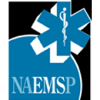Article summary by Casey Patrick, MD
Article reviewed: Patrick C, Ward B, Anderson J, Rogers Keene K, et al. Feasibility, Effectiveness and Safety of Prehospital Intravenous Bolus Dose Nitroglycerin in Patients with Acute Pulmonary Edema. Prehosp Emerg Care. 2020 Nov-Dec;24(6):844-850.
Background. The broad teaching of “CHF exacerbation” as a singular diagnosis is often too broad when applied to undifferentiated dyspneic patients in the emergency setting. Recently, the term sympathetic crashing acute pulmonary edema (SCAPE) has become more prominent in effort to identify/classify the critically ill faction of CHF exacerbations with hyperdynamic volume shift. These acute pulmonary edema patients needing emergent vasodilation, which in EMS, has classically been limited to sublingual and topical nitrates. Levy and Wilson’s ICU and emergency department (ED) data demonstrated a role for IV bolus nitroglycerin (NTG) in severely hypertensive acute pulmonary edema patients with decreased intubation rates, ICU LOS and hospital LOS when compared to nitroglycerin drip [1,2]. Bolus IV NTG is an attractive EMS option due to ease of use, low cost and rapid onset with short half-life.
Methods. This was a retrospective chart review of all patients treated with bolus dose IV NTG by the Montgomery County Hospital District (MCHD) EMS service in greater Houston. Data from the first year following protocol roll out was reviewed. MCHD is a ground-based, suburban, third-service EMS agency that provides all 911 response coverage for an 1,100 square mile area.
This was a quality review of a previously implemented protocol for bolus dose IV NTG in acute pulmonary edema patients. Paramedics were educated on pathophysiology and diagnosis of acute pulmonary edema. Inclusion parameters included moderate to severe respiratory distress with systolic blood pressure greater than 160 mmHg. Upon recognition, a 1 mg slow IV NTG bolus was allowed with the option to repeat in 5 minutes (two dose max).
Initial chart review involved assessment to determine proper protocol application along with EMS and ED chart review to assess final diagnosis via ED imaging, laboratory data and primary impression.
Results. During the study period, 48 total patients were treated with bolus dose IV NTG. Eighty-eight patients were determined to have been eligible for treatment with 18 of those having no IV access and the other 22 patients excluded due to paramedic deferral. Of the 48 treated patients, all were deemed protocol appropriate by reviewers. These patients were acutely ill with a median EMS initial and ED arrival SBP of 211 mmHg and 182 mmHg respectively. This SBP reduction of approximately 15% is consistent with treatment recommendations for hypertensive crisis. Like in Levy’s hospital data, almost 70% of patients only required a single IV bolus dose. This is quite appealing from a prehospital efficiency standpoint.
Additionally, following SCAPE pathophysiology and diagnostic education and training, paramedics were able to accurately recognize decompensated acute pulmonary edema – 45/48 (94%) of treated patients were ultimately determined to have a final ED diagnosis of acute pulmonary edema.
There was, however, a 2% rate of hypotension (SBP<90) which resolved without treatment or significant clinical event prior to ED arrival, which is consistent with Levy and Wilson’s hospital rates of hypotension and subsequent EMS data from Perlmutter et al. as well [3].
Conclusions:
- Paramedics can accurately identify acute pulmonary edema with proper education
- Bolus IV NTG (1 mg x 2 doses) appears safe in the EMS setting
- A BP reduction of approximately 15% was obtained
- 70% of treated patients only required a single 1 mg dose
- Further randomized, prospective investigation is warranted
- Recent European data even suggests a possible long-term mortality benefit from prehospital IV bolus NTG in SCAPE patients
Read next:
Article Bites: Pain management options
Comparing the efficacy of analgesics to reduce acute pain in the prehospital setting
References
1. Levy P, Compton S, Welch R, et al. Treatment of Severe Decompensated Heart Failure with High-Dose Intravenous Nitroglycerin: A Feasibility and Outcome Analysis. Annals of Emergency Medicine. 2007;50(2):144-152.
2. Wilson SS, Kwiatkowski GM, Millis SR, et al. Use of nitroglycerin by bolus prevents intensive care unit admission in patients with acute hypertensive heart failure. The American Journal of Emergency Medicine. 2017;35(1):126-131.
3. Perlmutter MC, Cohen MW, Stratton NS, Conterato M. Prehospital Treatment of Acute Pulmonary Edema with Intravenous Bolus and Infusion Nitroglycerin. Prehosp Disaster Med. 2020 Dec;35(6):663-668.
4. Miró Ò, Llorens P, Freund Y, et al.; EAHFE Research Group. Early intravenous nitroglycerin use in prehospital setting and in the emergency department to treat patients with acute heart failure: Insights from the EAHFE Spanish registry. Int J Cardiol. 2021 Dec 1;344:127-134.














